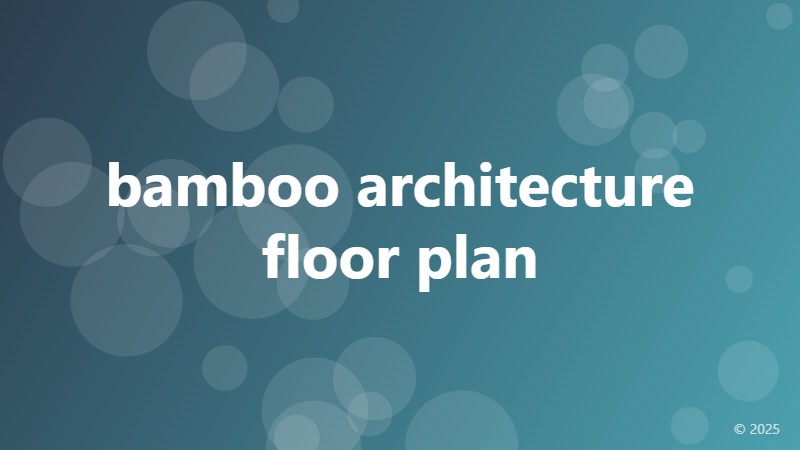bamboo architecture floor plan

Sustainable and Aesthetic: The Benefits of Bamboo Architecture Floor Plan
Bamboo, a highly renewable and sustainable resource, is increasingly being used in modern architecture to create eco-friendly and visually stunning buildings. One of the key components of bamboo architecture is the floor plan, which plays a crucial role in determining the overall aesthetic and functionality of the structure. In this article, we'll explore the benefits of incorporating bamboo into your architecture floor plan and how it can contribute to a more sustainable and environmentally conscious building design.
What is Bamboo Architecture?
Bamboo architecture refers to the use of bamboo as a primary building material in construction. This sustainable resource is highly versatile and can be used for a wide range of applications, from flooring and roofing to walls and furniture. Bamboo architecture is becoming increasingly popular due to its numerous benefits, including its eco-friendliness, durability, and aesthetic appeal.
The Advantages of Bamboo Architecture Floor Plan
There are several advantages to incorporating bamboo into your architecture floor plan. One of the most significant benefits is its sustainability. Bamboo is a highly renewable resource that can be harvested in as little as three to five years, compared to traditional wood which can take decades to mature. This makes bamboo a highly attractive option for eco-conscious builders and architects.
Another advantage of bamboo architecture floor plan is its durability. Bamboo is highly resistant to pests and decay, making it an ideal choice for building structures that need to withstand harsh weather conditions. Additionally, bamboo is also highly flexible, making it an excellent option for buildings located in earthquake-prone areas.
Designing a Bamboo Architecture Floor Plan
When designing a bamboo architecture floor plan, there are several factors to consider. One of the most important is the type of bamboo to be used. There are over 1,000 species of bamboo, each with its unique characteristics and properties. Some species are better suited for flooring, while others are more suitable for roofing or wall construction.
Another important consideration is the layout of the floor plan. Bamboo structures can be designed in a variety of styles, from modern and sleek to traditional and rustic. The layout of the floor plan will depend on the intended use of the building, as well as the personal preferences of the architect and builder.
Case Studies: Successful Bamboo Architecture Floor Plans
There are numerous examples of successful bamboo architecture floor plans around the world. One notable example is the Bamboo House in Bali, Indonesia, designed by architect Elora Hardy. This stunning bamboo structure features a unique, curved design that blends seamlessly into its surroundings.
Another example is the Bamboo Pavilion in China, designed by architect Simon Velez. This innovative structure features a complex, woven bamboo design that provides excellent natural ventilation and insulation.
Conclusion
In conclusion, bamboo architecture floor plan is a highly sustainable and aesthetically pleasing option for builders and architects. With its numerous benefits, including sustainability, durability, and flexibility, bamboo is an ideal choice for building structures that are both eco-friendly and visually stunning. By incorporating bamboo into your architecture floor plan, you can create a unique and innovative building design that not only benefits the environment but also enhances the lives of its occupants.